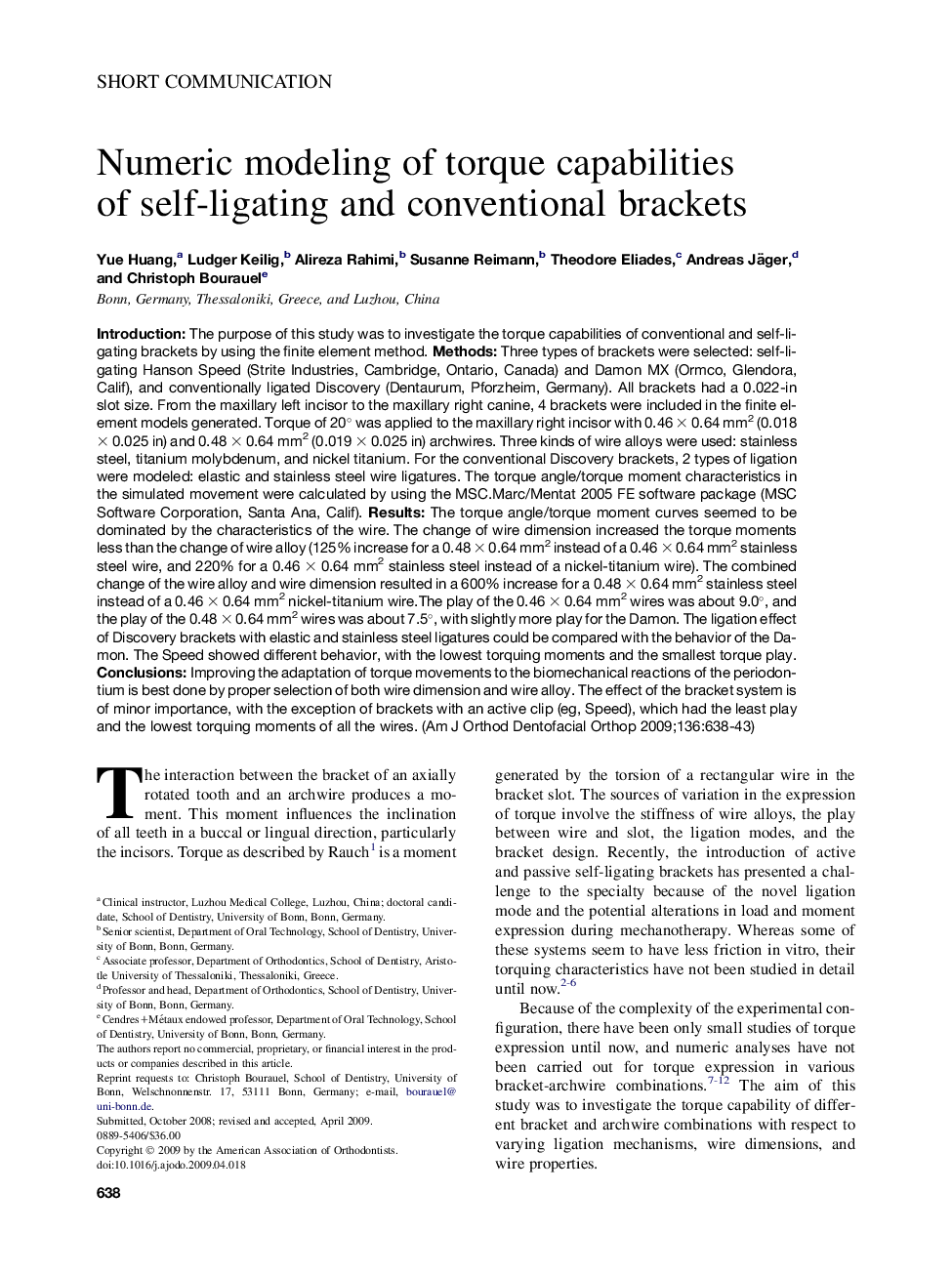| Article ID | Journal | Published Year | Pages | File Type |
|---|---|---|---|---|
| 3118040 | American Journal of Orthodontics and Dentofacial Orthopedics | 2009 | 6 Pages |
IntroductionThe purpose of this study was to investigate the torque capabilities of conventional and self-ligating brackets by using the finite element method.MethodsThree types of brackets were selected: self-ligating Hanson Speed (Strite Industries, Cambridge, Ontario, Canada) and Damon MX (Ormco, Glendora, Calif), and conventionally ligated Discovery (Dentaurum, Pforzheim, Germany). All brackets had a 0.022-in slot size. From the maxillary left incisor to the maxillary right canine, 4 brackets were included in the finite element models generated. Torque of 20° was applied to the maxillary right incisor with 0.46 × 0.64 mm2 (0.018 × 0.025 in) and 0.48 × 0.64 mm2 (0.019 × 0.025 in) archwires. Three kinds of wire alloys were used: stainless steel, titanium molybdenum, and nickel titanium. For the conventional Discovery brackets, 2 types of ligation were modeled: elastic and stainless steel wire ligatures. The torque angle/torque moment characteristics in the simulated movement were calculated by using the MSC.Marc/Mentat 2005 FE software package (MSC Software Corporation, Santa Ana, Calif).ResultsThe torque angle/torque moment curves seemed to be dominated by the characteristics of the wire. The change of wire dimension increased the torque moments less than the change of wire alloy (125% increase for a 0.48 × 0.64 mm2 instead of a 0.46 × 0.64 mm2 stainless steel wire, and 220% for a 0.46 × 0.64 mm2 stainless steel instead of a nickel-titanium wire). The combined change of the wire alloy and wire dimension resulted in a 600% increase for a 0.48 × 0.64 mm2 stainless steel instead of a 0.46 × 0.64 mm2 nickel-titanium wire.The play of the 0.46 × 0.64 mm2 wires was about 9.0°, and the play of the 0.48 × 0.64 mm2 wires was about 7.5°, with slightly more play for the Damon. The ligation effect of Discovery brackets with elastic and stainless steel ligatures could be compared with the behavior of the Damon. The Speed showed different behavior, with the lowest torquing moments and the smallest torque play.ConclusionsImproving the adaptation of torque movements to the biomechanical reactions of the periodontium is best done by proper selection of both wire dimension and wire alloy. The effect of the bracket system is of minor importance, with the exception of brackets with an active clip (eg, Speed), which had the least play and the lowest torquing moments of all the wires.
